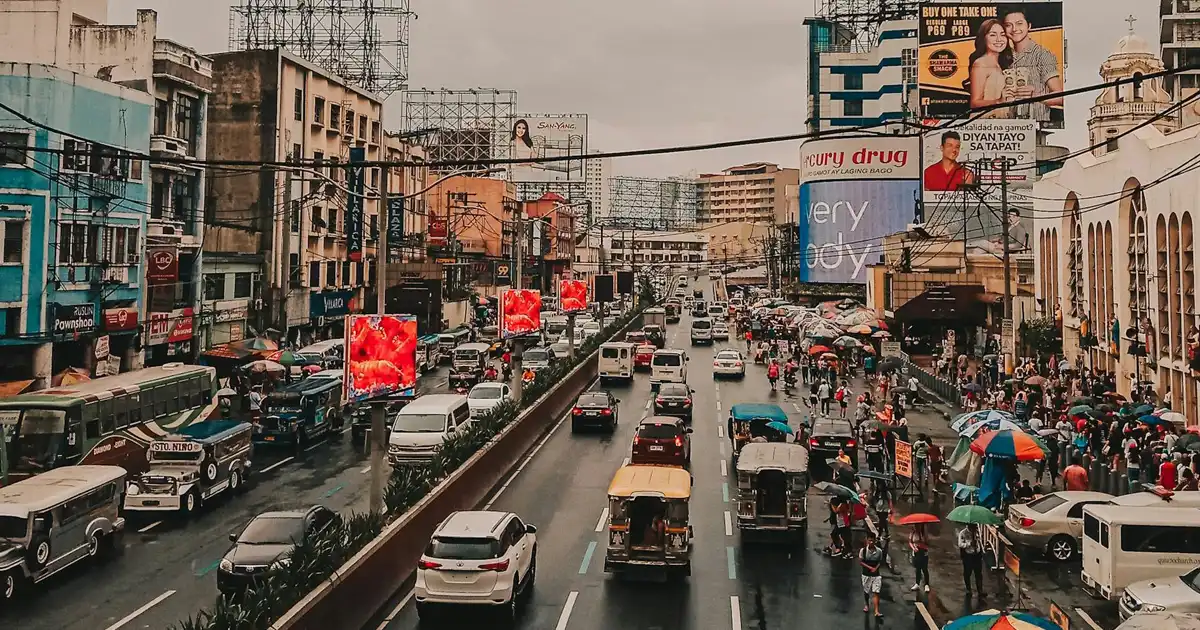People leave their homes for a variety of reasons. They do it for a job, an educational program, a partner, or themselves. How far they move can vary. Some people take it further and move to the other side of the world.
As far as expat destinations go, there are 8% of American citizens living in the Philippines (Mapa 2023), showing how famous the country is for those wanting to start a new life abroad.
However, relocating isn't as simple as packing a bag and jumping on a plane with a one-way ticket. Many people romanticize their stories about moving abroad. But the reality is way different.
So, what is it like to live in the Philippines once you move past the beaches and seaside towns? Is leaving your home country worth it?
This article tackles the truth about living in the Philippines.
Living in the Philippines: Pros and Cons
Determine whether you’re prepared to start a new life abroad. Carefully weigh the advantages and disadvantages of relocating to the Philippines.
Benefits of Living in the Philippines
1. The Languages Spoken
The first thing you should know before moving to a new country is whether you can communicate there effectively.
For example, an American who moves to Thailand may likely have difficulty speaking to any of the locals, considering their low rates of English fluency. Outside of expat communities, talking to anyone else there will be difficult.
However, if that same person were to move to the Philippines, communicating would be easier, considering that many locals speak English.
In an assessment conducted by Swiss firm Education First, the country placed 20th globally in English proficiency and second in Asia (Correa 2023).
Filipinos speak English in varying degrees, from passable to near-native fluency, depending on their educational and economic background.
Also, they often speak a mix of English and regional languages, but outsiders from English-speaking countries should be able to understand them just fine.
2. Money Goes Further
A poorer, third-world country has a lower cost of living. In your case, this translates to a higher standard of living. Living in the Philippines on a $4,000-a-month budget already gives you a luxurious lifestyle.
The cost of renting a studio apartment in a first-world country equates to a mortgage on a five-bedroom house with a pool. Or it can go towards renting another, larger apartment in a luxury building with a gym.
Money from a first-world country goes a lot further in a third-world country. This can be advantageous for many American expats living in the Philippines.

3. It’s a Tropical Paradise
One of the advantages of living in the Philippines is that you reside in a tropical paradise. The country has some of the most beautiful natural spots you will ever see.
However, getting to them can pose a challenge if you don't have the right connections and know-how.
It’s always best to travel with a local who can help circumvent the tourist trap elements of these destinations.
Disadvantages of Living in the Philippines
1. Lower Healthcare Standards
People in a first-world country have access to low-cost but high-quality healthcare. However, moving to a third-world country with a lower cost of living can mean lower healthcare standards.
Many of the most competent Filipino healthcare professionals often leave the country for greener pastures abroad. Some healthcare facilities have outdated machines for treatment.
But because the country is a source of medical and healthcare workers worldwide, expect great service.
2. Poor Infrastructure
Another disadvantage of living in the Philippines is the poor infrastructure. Public transportation, for example, is often uncomfortable.
Jeepneys, the most widely-used public transportation option, are often cramped. People stick together like sardines in a can. Meanwhile, most drivers in the country take traffic laws as mere suggestions
Also, not every city has a rail system. There’s also a lot of informal public transportation, with many motorcycle riders often taking pedestrians on for a small fee. This practice is not regulated.
That said, the country does have taxis and ridesharing apps, which generally work fine.
3. The Climate Is a Mixed Bag
What is it like to live in the Philippines in terms of the climate?
The country is a tropical destination, with lots of sunshine and clear skies. But the heat and humidity can be uncomfortable, particularly for someone who’s unacclimated.
There are also calamities. The Philippines is an archipelago on the Pacific Ring of Fire, so there may be volcanic eruptions, including underground eruptions that cause earthquakes. Fortunately, they are uncommon.
Moreover, the Philippines experiences a yearly average of 20 typhoons (Asian Disaster Reduction Center, n.d.). Most of them aren’t worse than strong winds and heavy rain, but a few big ones can destroy a city’s infrastructure and leave a veritable wasteland for weeks or months.
If leaving the United States or another first-world country is a serious goal, you should seriously consider the weather.
On a positive note, the temperature is fairly consistent throughout the year. This means that you only need one wardrobe for one general climate.
4. Filipino In-Laws
A common reason that many foreigners move to the Philippines is because they married someone from the country. That sounds good, but the reality of a Filipino marriage may be somewhat unfamiliar to Westerners.
Your wife’s family will be in your business. You may all have to meet up on Sundays for church, followed by a Sunday lunch that lasts the whole afternoon.
And forget about privacy. Everyone knows everything about everyone. It won’t just be blood relatives. Her grandma’s best friend has the same familial access. There are no secrets, and family means more than just blood.
There also won’t be a shortage of opinions either. Everyone will have something to say despite not knowing what they’re talking about.
On the other hand, once you get used to the family culture in the Philippines, you’ll realize it’s a great support system. You won’t feel alone, and you’ll always be welcome in someone else’s home. There won’t be dull moments during parties, events, and occasions. You’ll realize how much family contributes to your overall well-being and happiness.

Before Moving There
You now know the pros and cons of living in the Philippines. Do you still desire to move to this Southeast Asian country?
If so, here are things you should prepare before getting on a plane.
1. Get the Red Tape Sorted
Complete the paperwork. While being married to a citizen helps, there’s still quite a bit of red tape you have to go through before you get a 13(a) visa. Consult with migration lawyers and follow every step thoroughly to avoid potential issues.
2. Put Your Assets in Place
Leave no stone unturned when it comes to your finances. You may have to transfer your funds from one bank to another. You’ll also have to set it up so that any income you have, be it a pension or a paycheck from a job you can work from anywhere, makes its way into your account. Make sure your credit cards will work in your new country.
Also, take care of the real estate you'll leave behind. Leave that in the care of a trusted friend or relative or hire a caretaker to look after it.
Of course, you could also sell it. This solves the maintenance problem and puts cash in your pocket.
On that note, use reputable currency exchanges. Some businesses might be less than honest in their dealings. Only transact with banks or chains when exchanging any foreign currency you might have.
3. Let Your People Know Where You’re Going
Ensure your friends and family back home know where you’ll be, how to contact you, and what to do if they can’t reach you.
You can’t just disappear from a bunch of people’s lives. This is also for safety’s sake, which is doubly important if you’re planning to move to a different country entirely.
Be Ready for the Growing Pains
Living in the Philippines as a foreigner can be difficult. Aside from the actual travel, there’ll be an adjustment period during which you’ll probably experience quite a few growing pains. There are many reasons not to move abroad, but you’ll find that those reasons don’t outweigh the potential benefits.
That can be especially true if you move for love. Living in the Philippines can be worth it when you’re with the right person.
References
Mapa, Claire Dennis S. 2023. “Foreign Citizens in the Country (2020 Census of Population and Housing).” Population and Housing | Philippine Statistics Authority | Republic of the Philippines.
https://psa.gov.ph/statistics/population-and-housing/node/1684059982.
Correa, TJ. 2023. “The Philippines ranks 20th globally in English Proficiency and second in Asia according to a survey.” SBS.
https://www.sbs.com.au/language/filipino/fil/article/the-philippines-ranks-20th-globally-in-english-proficiency-and-second-in-asia-according-to-a-survey/nmo0uzanm.
Asian Disaster Reduction Center. n.d. “Information on Disaster Risk Reduction of the Member Countries: The Philippines.” Asian Disaster Reduction Center(ADRC). Accessed July 2, 2024.
https://www.adrc.asia/nationinformation.php?NationCode=608&Lang=en.

























